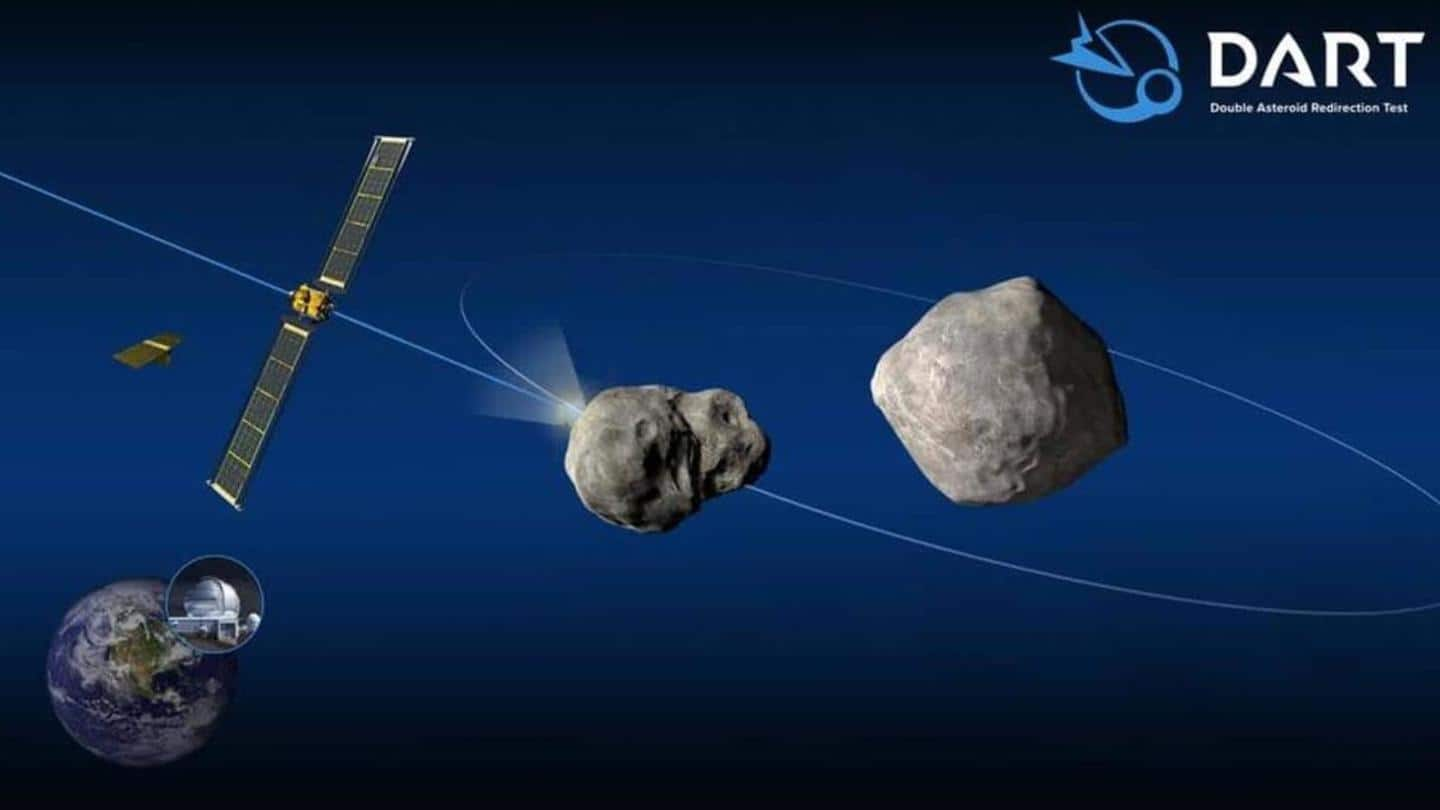
NASA's DART mission successfully altered the asteroid's orbit forever
What's the story
Here's the good news we have all been expecting. NASA has confirmed that the Double Asteroid Redirection Test (DART) has succeeded in altering the path of its target, Dimorphos.
Prior to the planetary defense test, the asteroid took 11 hours and 55 minutes to orbit its parent asteroid-Didymos. Now, the team confirms that the duration has been shortened to 11 hours and 23 minutes.
Context
Why does this story matter?
There is no need to worry about massive asteroid strikes in future since NASA has us covered. The mere attempt of a planetary defense test itself is a milestone.
It marks humanity's first intentional attempt at altering the kinetics of a celestial object. To add to it, the DART mission classifies as the first full-scale demonstration of asteroid deflection technology.
Time of orbit
DART breaks past initial benchmark time NASA had aimed at
To recall, Dimorphos is a moonlet revolving around a larger asteroid called Didymos.
The intentional collision between DART and Dimorphos took place on September 26. Since then, telescopic monitoring from Earth was underway to determine the change in orbital time.
Astronomers confirmed that the orbit period of Dimorphos was shortened by 32 minutes. NASA initially aimed at a change of 73 seconds or more.
Official words
Missions like DART will help protect Earth from asteroid collisions
"This result is one important step toward understanding the full effect of DART's impact with its target asteroid," said Lori Glaze, director of NASA's Planetary Science Division.
"As new data come in each day, astronomers will be able to better assess whether, and how, a mission like DART could be used in the future to help protect Earth from a collision with an asteroid."
Impact
NASA is now measuring efficiency of momentum transfer from collision
NASA is now shifting its focus toward measuring the efficiency of momentum transfer from DART's 22,530km/h collision with its target.
The team will do an "analysis of the 'ejecta' - the many tons of asteroidal rock displaced and launched into space by the impact."
The characteristics of the asteriod's surface, and how strong or weak it is, are being investigated as well.
Investigation
DART dataset can improve future planetary defense test
"DART has given us some fascinating data about both asteroid properties and the effectiveness of a kinetic impactor as a planetary defense technology," said Nancy Chabot, the DART coordination lead from the Johns Hopkins Applied Physics Laboratory (APL).
"The DART team is continuing to work on this rich dataset to fully understand this first planetary defense test of asteroid deflection."